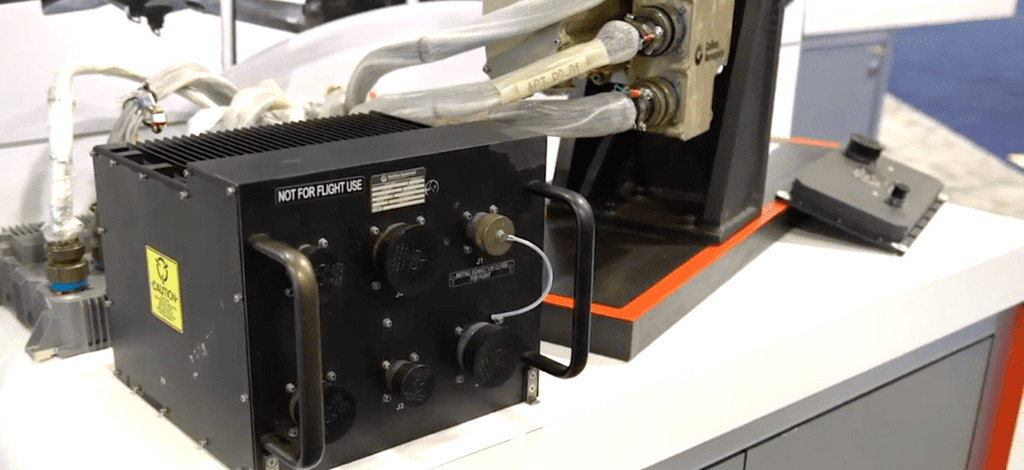
Collins Aerospace is in discussions with a number of OEMs about its next-generation vehicle management computer, pictured here, which features 20 times the processing power of its existing in-service flight control computers. Photo: Collins Aerospace
A flight control computer currently under development at Collins Aerospace will have 20 times the processing power of the avionics maker’s current generation and will eventually enable autonomous flight, Darryl Woods, general manager of control systems at Collins told Avionics International.
First unveiled during the 2018 Farnborough Airshow, Collins Aerospace describes the next-generation technology as its vehicle management computer (VMC), as it is being developed with open-source software that could be customized for a variety of different segments across civil and military aviation. Certification of the VMC is expected by 2022, although a launch customer has not yet been confirmed.
“The VMC will be FAA-certifiable for civil and military rotorcraft, fixed-wing and UAS. Many platforms, including urban air mobility, could benefit from the advanced fly-by-wire and autonomy capabilities it provides, and we believe it will have broad applications. We are already in discussion with a number of [original equipment] customers across different platforms,” Woods said.
Increased processing power for the VMC is enabled by the use of three multi-core processors embedded within the computing architecture. In recent years, Collins has been working with WindRiver to advance the use of multi-core processors within safety critical flight applications, an effort that also lead to the recent development of a primary flight display.
Among the capabilities that the VMC will enable include cybersecurity, object avoidance, mission management and utility management. However, Woods said that a major goal for the VMC is to eventually enable autonomous flight operations.

Collins recently exhibited the next generation VMC at the 2020 Helicopter Association International exhibition. Photo: Collins Aerospace
“Our current flight control computer enables fly-by-wire. What the VMC will do is allow more complex control laws to be used and processed, which then enables autonomous flight. The software and control laws are the limiting factor of autonomous flight, as they require significantly more computing power,” Woods said.
According to Woods, within the helicopter market, the increased processing power has the potential to “reduce the traditional number of black boxes on rotorcraft platforms to potentially save space and weight.”
One focus for the development of the VMC is the use of open source software, which can provide customers with the ability to add their own applications. Woods said the company is in discussions with airframe manufacturers that are competing for the U.S. Army’s Future Vertical Lift (FVL) program as well as the Future Attack Reconnaissance Aircraft (FARA) competition.
Dave Schreck, vice president and general manager of military avionics programs and helicopters for Collins Aerospace, told Avionics during the 2019 Association of the United States Army annual conference that Collins is supplying modular open systems architecture avionics system for Bell’s 360 Invictus platform, one of the five FARA competitors.
Adam Johnson, program manager for power and controls at Collins Aerospace, explained during a video interview posted by the company at the recent 2020 Helicopter Association International (HAI) exhibition that the VMC can introduce a new development business model as well.
“Collins is investing heavily into the baseline architecture of the VMC, what that does is we bring about 80 percent of the typical non-recurring investment engineering to the table where we have spec’d 80 percent of the requirements that we expect to hit the industry and that allows our customers to customize the last 20 percent of those requirements,” Johnson said.